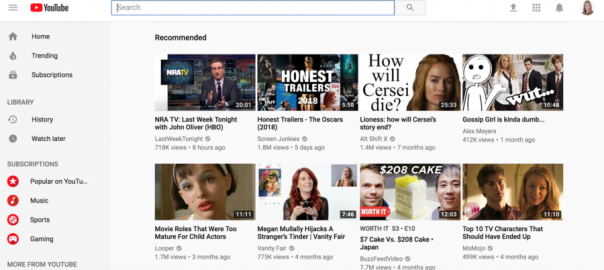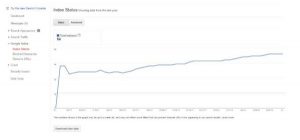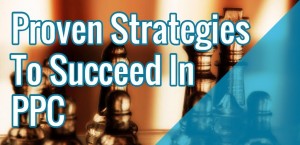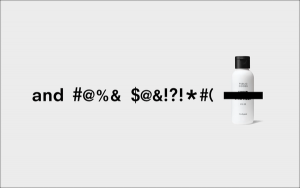— March 13, 2018

rawpixel / Pixabay
Marketers have often used personalization as a tactic to improve certain metrics. They may have included someone’s name in an email subject line as a tactic to improve email open rates. They may have served a pop-up as someone attempting to leave their site as a tactic to lower bounce rates. These tactics have likely proven to be successful in many cases, so marketers keep using them.
As consumers find themselves with more and more marketing messages competing for their attention, personalization is increasingly becoming a necessity. However, consumers will see through surface-level personalization tactics and flock to companies that can provide them with truly relevant and individually engaging experiences.
The problem with tactics
Let me share an example of a personalization tactic I was less than impressed with. I was browsing recipes on a site. When I navigated to the top of screen, I was served this pop-up:
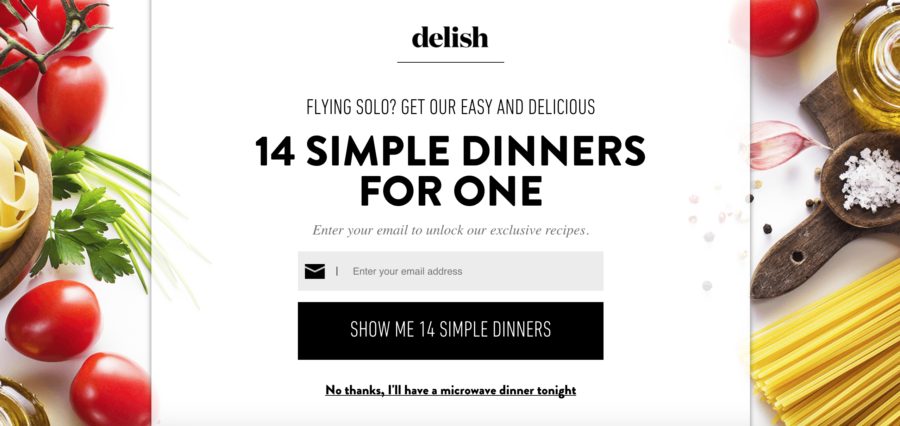
Ineffectively targeted pop-up
To start, this is a weirdly targeted message because I’m married and I don’t often cook for one person. But it’s particularly weird because the pop-up appeared as I was viewing an article about “date night recipes” (which should indicate that I was not interested in “meals for one”). And then, of course, the pop-up included the line “No thanks, I’ll have a microwave dinner tonight” — which I perceived as unnecessarily haughty.
So at this point, not only am I annoyed about the inaccurate targeting, I’m annoyed that it snarkily suggested that I have a microwave dinner (and I’d like the pop-up to know that I haven’t eaten a microwave dinner since grad school). So I was initially confused and then I was offended. Clearly, I did not have a great experience.
When building this pop-up, the company was not thinking about my experience. It was thinking about improving its email capture and engagement rates.
The importance of a customer experience strategy
Many companies consider themselves “customer-centric,” but it’s clear that experiences like the one I described don’t truly have the customer’s experience in mind. If that pop-up had been better targeted and not snarky, I may have responded positively to it. But it’s unlikely that it would have fundamentally changed my opinion of the business or turned me into a loyal customer.
However, when personalization is integrated into the experience — so that you don’t necessarily notice it but the experience just feels really relevant to you — it can make a world of difference.
For example, I find myself enthralled with the YouTube experience these days. I find that I can never watch just one YouTube video, because it’s too easy to find more videos that are interesting to me based on the wide range of interests I have. I’m always surprised at how well YouTube knows me. I rarely ever seek out a particular video, but once I find myself there I can always find something else to watch. And the recommendations have only gotten better as I have used it more and more. That’s a good experience that’s always relevant to me personally.
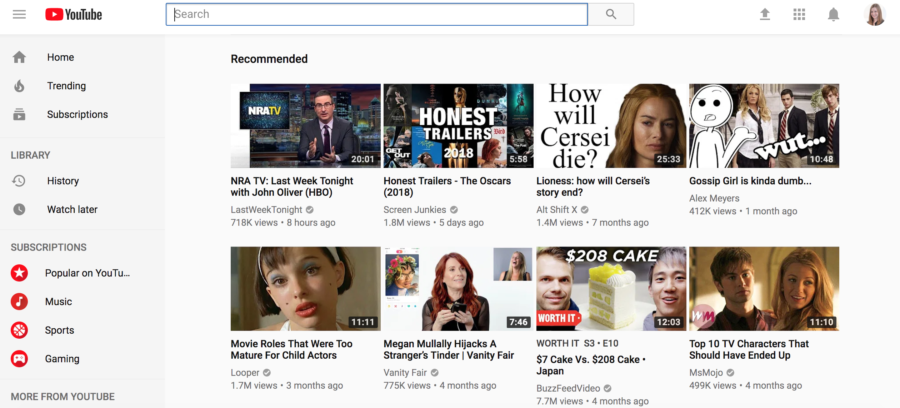
The YouTube homepage shows me recommendations for videos I will likely be interested in based on everything it knows about me
But if YouTube had simply offered a pop-up telling me to “Sign up for a newsletter!” or “No thanks, I’ll just stare at the wall tonight” instead, I would be unlikely to keep coming back to the app.
Final Thoughts
Personalization is not a fad. It’s more than a tactic you can leverage a few times to improve your conversion rate or decrease your bounce rate. That’s not to say that it can’t be a tactic that you use to improve your metrics. It should just be much more than that.
Personalization is truly a business strategy for delivering a better experience to prospects and customers. That way of thinking is not just for the YouTubes, Amazons and Netflixes of the world. Any company can integrate personalization into their customer experiences. To learn more about how everyone can realize the one-to-one dream, download a free digital copy of our new book, One-to-One Personalization in the Age of Machine Learning.
Business & Finance Articles on Business 2 Community
(47)
Report Post